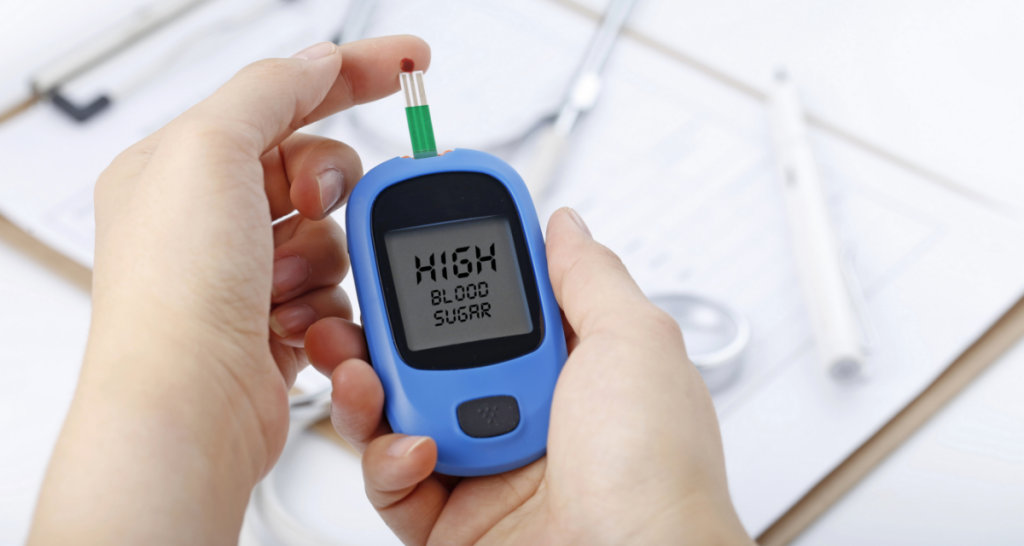CONTACT US: 0919 058 5858 | 02 899 51920
CONTACT US:
0919 058 5858 | 02 899 51920
Diabetes is a growing concern in the Philippines, affecting millions of Filipinos. According to the International Diabetes Federation (IDF), as of 2021, the Philippines had a total adult population of 66,754,400 with a 7.5% prevalence of diabetes (4,303,899 cases of diabetes in adults).
This chronic disease occurs when the pancreas can no longer produce insulin, or the body fails to use insulin effectively . The carbohydrates that we consume are broken down by the body into glucose in the blood, and insulin helps the glucose to get to the cells to be used for energy. When the body cannot produce or use insulin, it results in high blood glucose levels, called hyperglycemia. Over time, uncontrolled high glucose levels may inflict damage to the kidneys, heart, eyes, and feet. Without treatment, it can lead to failure of various organs and tissues.
Genetics, diet, and lifestyle are key factors that influence the prevalence of diabetes in the Philippines. Many Filipinos don’t even know that they have this chronic disease until it’s too late.


A well-balanced diet is a crucial part of everybody’s health but when you have diabetes, you should be aware of what foods can have an impact on your blood sugar levels.
Diabetes primarily stems from unhealthy eating habits such as consuming excessive sugar. Be empowered by doing your own research to avoid high sugar content. Cut down on desserts that often contain a high number of calories, contributing to obesity and increasing the risk of diabetes. Look for healthier alternatives such as fruits and low-calorie desserts. Monitoring your calorie intake and following your doctor or dietitian’s food plan recommendations can help you avoid diabetes and its health complications.
Make a conscious effort to eat more foods that lower blood sugar levels such as ampalaya (bitter gourd), okra, broccoli, flax seeds, chia seeds, pumpkin seeds, kefir, greek yogurt, etc. In addition, limit your intake of saturated and trans fats which can contribute to high cholesterol levels and increase the risk of diabetes. It’s not enough to eat healthy foods; you also need to watch your portion sizes. By being aware of what foods to eat and avoid, you can have healthier options when buying groceries or eating out.

Exercise is an effective activity for managing and preventing diabetes. Engaging in regular physical activity will help stabilize blood sugar levels. Make it a point to exercise three to four times a week to improve insulin sensitivity.
Exercise can also help you maintain a healthy weight, strengthen your heart, improve your respiratory system, reduce stress, and improve overall health. Find time to exercise even if you have a hectic schedule.
Short bursts of activity such as taking the stairs instead of the elevator, walking around the office during your lunch break, or doing sitting exercises, etc. can make a big difference in your overall health.
When you’re stressed, your body releases hormones like cortisol, affecting both your physical and emotional well-being. According to the Mayo Clinic, prolonged stress may cause your blood sugar to rise. Studies also show that people with diabetes experience fluctuations in their blood sugar levels whenever they are stressed.
Stress has also been linked to toxic coping mechanisms such as smoking, binge drinking, and stress eating, all of which can result in an elevated blood sugar level.
People have varying ways of dealing with stress. You can experiment with different techniques such as physical (Zumba exercises, walking, running, yoga, pilates, etc.), mental (meditation, deep breathing), mindfulness (journaling, reading self-help books, etc.), or a combination of techniques, to improve your general well-being and reduce your risk of developing diabetes. Find stress-reducing activities that work for you.

Easy access health plan options for the Filipino community.
We know finding the right healthcare plan can be a complex and confusing task.
Our health plan specialists are always here to help 24/7.
Got more questions?